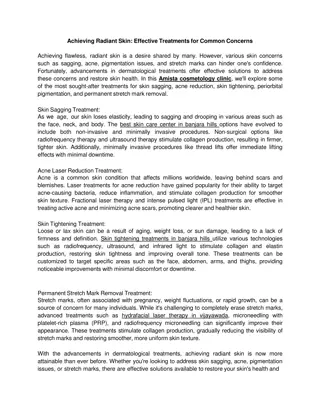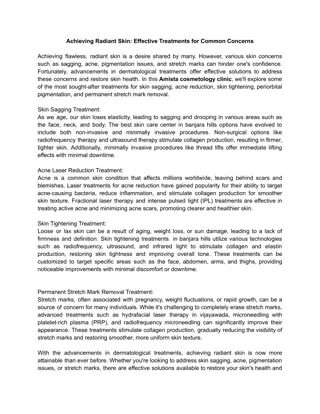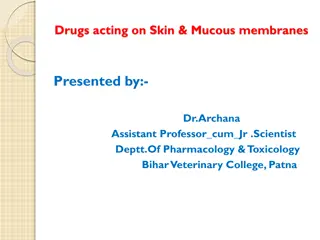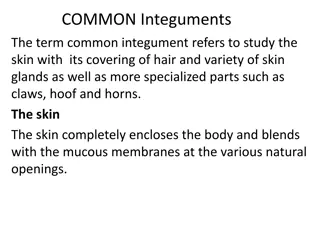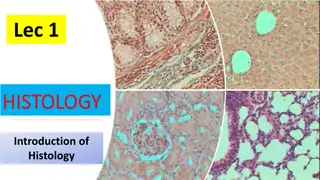HISTOLOGY OF THE SKIN
The skin, the largest immunologically active organ, is composed of three layers - epidermis, dermis, and hypodermis. The epidermis consists of four layers - the horny cell layer, granular cell layer, spinous cell layer, and basal cell layer. Understanding the structure and composition of the skin is essential for diagnosing and treating various skin diseases and conditions.
Download Presentation

Please find below an Image/Link to download the presentation.
The content on the website is provided AS IS for your information and personal use only. It may not be sold, licensed, or shared on other websites without obtaining consent from the author.If you encounter any issues during the download, it is possible that the publisher has removed the file from their server.
You are allowed to download the files provided on this website for personal or commercial use, subject to the condition that they are used lawfully. All files are the property of their respective owners.
The content on the website is provided AS IS for your information and personal use only. It may not be sold, licensed, or shared on other websites without obtaining consent from the author.
E N D
Presentation Transcript
HISTOLOGY OF THE SKIN HISTOLOGY OF THE SKIN Ali M. Gargoom Professor of Dermatology Faculty of Medicine Benghazi University Libyan International Medical University
Chapter 1 : Histology of the skin Chapter 2 : History taking and examination ofskin disease Chapter 3 : Bacterial skin infections. Chapter 4 : Fungal skin diseases. Chapter 5 : Viral skin infections. Chapter 6 : Parasitic skin diseases. Chapter 7 : Mycobacterial skin diseases. Chapter 8 : Urticarias and Erythemas. Chapter 9 : Disorders of sebacous glands. Chapter 10: Autoimmune vesiculo-bullous diseases. Chapter 11: Pigmentary disorders of the skin. Chapter 12: Papulosquamous skin diseases. Chapter 13: Eczemas. Chapter 14: Disorders of hairs.. Chapter 15: Connective tissue diseases. Chapter 16: Genodermatosis. Chapter 17: Topical formulations and topical steroids. Chapter 18: Sexually Transmitted Diseases
OBJECTIVES OF THE LECTURE Layers of the skin. Layers of epidermis Cells of epidermis. Contents of dermis Skin appendages. Functions of the skin 4
SKIN THE LARGEST IMMUNOLOGICALLY ACTIVE ORGAN, WEIGHTING ABOUT FOUR KILOGRAMS (16% BW) THE SKIN COVERING A SURFACE AREA OF ABOUT 2 SQUARE METER. THE SKIN IS COMPOSED OF THREE LAYERS: 1. Epidermis. 2. Dermis. 3. Hypodermis. 5
THE SKIN IS COMPOSED OF THREE LAYERS 1. Epidermis. 2. Dermis. 3. Hypodermis. 7
THE EPIDERMIS IS FORMED OF FOUR LAYERS 1. The horny cell layer. 2. The granular cell layer. 3. The spinous cell layer. 4. The basal cell layer. The thickness of epidermis vary from 0.1mm to 1.0mm On palms & soles there is an additional layer known as starum lucidium. 8
EPIDERMIS : LAYERS Stratum Corneum Stratum Lucidum Stratum Granulosum Stratum Spinosum Stratum Basale Thin Skin Thick Skin
CELLS OF THE EPIDERMIS The epidermis is composed of four types of cells 1. Keratinocytes. 2. Melanocytes. 3. Langerhans' cells. 4. Merkel cell. 11
KERATINOCYTES (90% - 95% ) Desmosome = Intercellular Bridges
Other cells of epidermis: Melanocyte & Langerhans cell
MELANOCYTES 14
Dermis The main thickness of the skin is made up by the dermis which vary from 1.0 mm on the eyelids to 5.0 mm on the palms and soles. The dermis is made up mainly from four components. 1. Collagen fibers. 2. Elastic fibers. 3. Ground substance. 4. Cells. 16
DERMIS 1. Collagen fibers: Family of fibrous proteins >15 distinct type in human skin. Constitutes >70% of the dermis and its responsible for the strength of the skin. Type I collagen represent (70%) & type III collagen comprising (15%). 2. Elastic fibers: Elastin constitutes about 1% to 3% of the skin. Responsible for the elasticity of the skin. 3. Ground substance: Proteoglycans (primarily hyaluronic acid) is the major component . Strongly attract and retain water within the dermis. 4. Cells of the dermis: Fibroblast is the major cell (synthesis of collagen, elastin and ground substance). Other cells include macrophages, histocytes, mast cells, and lymphocytes
DERMIS Dermis is divided into two components; 1-Papillary dermis: Upper part of dermis beneath the basal layer of the epidermis Papillary dermis is thin, cellular and highly vascularized. Composed of thin haphazardly arranged collagen fibers. 2-Reticular dermis:
Reticular Dermis
DERMIS Dermis is divided into two components; 1-Papillary dermis: The upper part of dermis just beneath the basal layer of the epidermis Composed of thin haphazardly arranged collagen fibers. Papillary dermis is thin, cellular and highly vascularized. 2-Reticular dermis: The major component of dermis. Extend from papillary dermis to the subcutaneous tissue. Made from thick collagen fibers arranged parallel to the skin surface. Reticular dermis is thicker but less cellular than papillary dermis.
Reticular Dermis
SKIN APPENDAGES The skin appendages includes; 1. Hair. 2. Nails. 3. Sweat glands. 4. Sebaceous glands. 22
Skin Appendages Nails Eccrine Sweat gland Apocrine Sweat gland Hair follicle Sebaceous gland
Hair. 24
1. 2. Sweat glands. Sebaceous glands. 25
Functions of the Skin 1. Protective barrier 2. Regulation of body temperature. 3. Excretion of certain substances and toxins. 4. Vitamin D synthesis. 5. Socio-sexual communication. 6. Immunological function. 7. Sensory function 27




